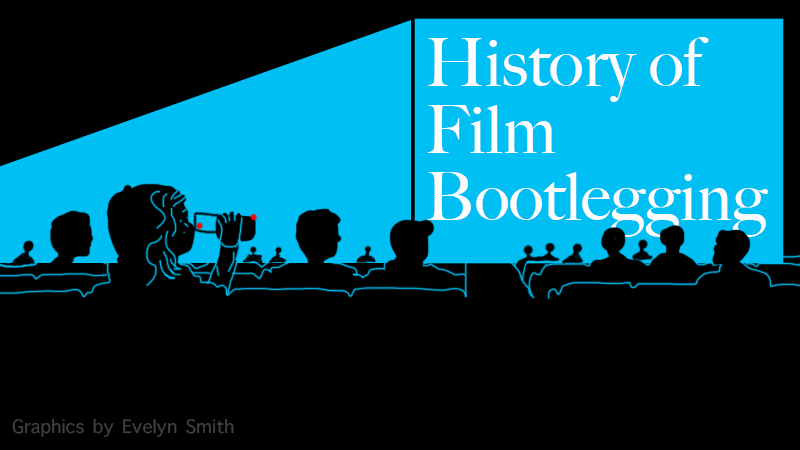by Gary Chapman
Nowadays, if you want to “acquire” a new film to watch, you go find it on a streaming website, or use one of a bajillion streaming services to watch the newest releases. But, back when most theaters were open, you had to, you know, pay 10 bucks and your life savings on concessions. People are frugal, and they do not want to pay money. So, they go down the realm of copyright infringement. In this article, we are going to discuss the history and methods of film bootlegging.
Back in the early days of film, people would make a “dupe” of a film and just release it under a different, but similar, title. For instance, Shut Up, a 1902 film by the Biograph Company was duped and released by Lubin Manufacturing Company as How to Shut Up a Quarrelsome Wife, according to the National Archives.
In the 1960s, the way to do it was buying and trading the film reels after the film had made it through its run. An example of this would be people like Woody Wise, who got charged after selling the 1968 print of the Barbra Streisand vehicle Funny Girl. The FBI had been on his tail for a while.
He said to Matt Novak that, “The FBI had a little bit of trouble getting at me number one because it wasn’t stolen, even though they technically got me on a stolen print. I purchased it. I never stole anything. But there’s a very fine line there from the copyrighted film to showing something that you don’t have a right to show or sell.”
Here’s a 1977 story from KSD-TV (now KSDK) about a film collector being raided by the FBI.
Once camcorders got affordable and small enough, people would begin bringing camcorders (usually in a bag, or a backpack) and recording the film from their scene. This practice was looked at in the Seinfeld episode “The Little Kicks”. How theaters would try to stop it is by making the ushers look, or by forbidding bags.
Another form that came along is Tele-Sync, and that is where the projectionist would put a camcorder in the booth and use the audio output of the projector to have the audio from the film. These are preferred because of superior audio and video quality. The cams were known to have “commentary,” from cinema patrons to babies. These cams came along really around the mid-90s, especially in areas like Malaysia and Southeast Asia where the VCD of the film would be out before the film released.
Lim Audrey from ThingsAsian wrote in Feb. 2003 that “Crouching Tiger, Hidden Dragon came out in the pirated stalls a few weeks before the movie hit the theatres. The same goes for many other titles. There is always a certain satisfaction of watching something first, no matter how bad the quality is.“
The last major form, other than just ripping the Blu-ray or DVD, is the Screener. A screener is a version of the film that is sent out to critics, video store owners, or award voters. The places would use DVDs that contained a slightly modified version of the film (certain scenes being black and white) and having the receiver’s name and email watermarked into the video.
People have gotten in trouble for selling screeners. In 2004, Academy member Carmine Caridi was expelled from the Academy of Arts and Sciences for trading screeners to Russel Sprauge and was forced to pay $30,000, according to Craig Hoffman of Warner Bros.
Starting in 2022, The Academy will be switching to a streaming-only model.
Now that films are currently being released to streaming only, with Disney releasing to Disney+ and Warner Bros. using HBO Max, most people do not have to worry about piracies (other than people cracking the encryption and ripping the video), but I guess it is 20 bucks to get access on Disney’s end. Film is adapting, but the pirates are a few steps ahead.





